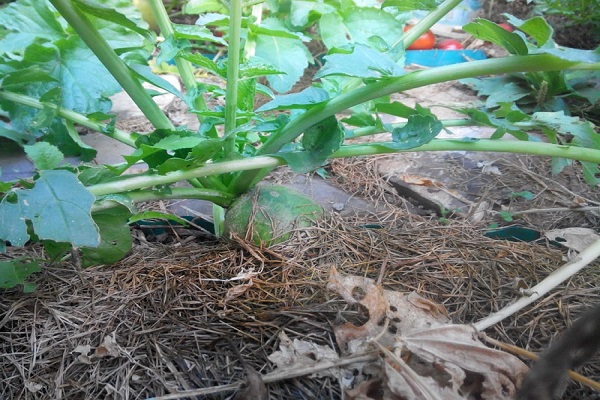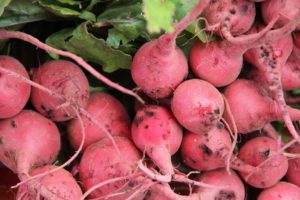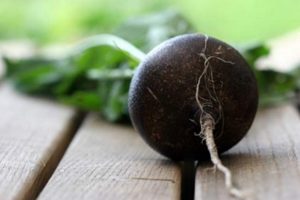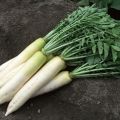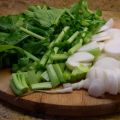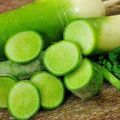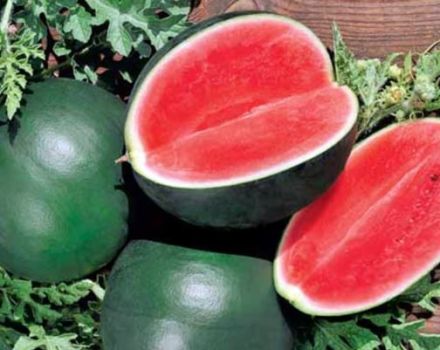Dates of planting margelan radish, cultivation and care in the open field
In the old days, Chinese radish was delivered along the silk road through Uzbekistan to the territory of modern Russia. The first to plant the vegetable were residents of Margelan, which is located in the Fergana Valley. The root crop, which has another name for the forehead, ripens in 2 months, takes root in a sharply continental climate. Margelan radish is cultivated in Siberia, the Urals, and in the south and north of the country. It contains much more minerals than other crops from the Cabbage family.
Description of the variety
In the Margelan radish, a spreading rosette of leaves is formed. Vegetable weight does not exceed 500 grams. A succulent root vegetable has a cylindrical shape, short in length. Its peel is green, light purple. The pulp has the same shade. The tip of the fruit is usually white. There is a red radish, but there is a green strip near its tops. Fruits, which from 1 sq. m are harvested up to 6 kg, they have a pleasant taste, they do not taste bitter, they are stored for a long time.

Benefit and harm
Chinese or Margelan radish, containing a small amount of calories, cleanses the intestines, speeds up metabolism, removes toxins... The vegetable saturates the body with minerals in the form of:
- potassium and calcium;
- iron and zinc;
- phosphorus and magnesium;
- sulfur and copper.

Selenium and iodine, present in the root vegetable, alleviate the condition of a person with endocrine disorders. Although in this varieties of radish fewer vitamins than other varieties, but they are represented by several groups, including riboflavin, pyridoxine, tocopherol, ascorbic and pantothenic acid. When using a product rich in fiber, pectin, polysaccharides:
- The production of gastric juice is normalized.
- The functioning of the liver is stimulated.
- Bile liquefies.
- Reduces the pain of rheumatism.
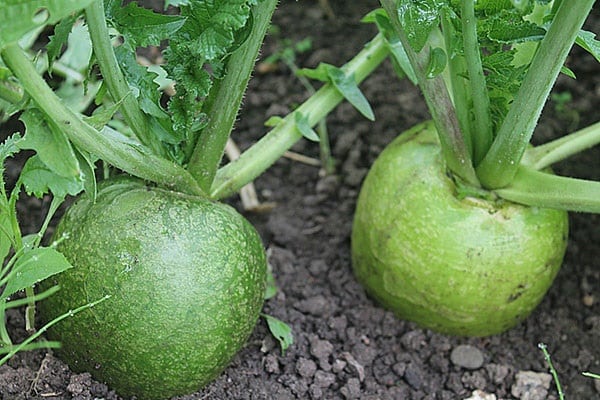
Chinese radish helps to eliminate inflammation, disinfect the skin.
Vegetable overuse can backfire. The substances present in it give the milk an unpleasant odor, it makes the belly of babies swell from it. Limiting the use of Chinese radish is for pancreatitis, ulcers or gastritis of the stomach, with kidney pathologies, with a tendency to allergies.
Pregnant women cannot eat root crops, it is fraught with miscarriage, placental abruption.
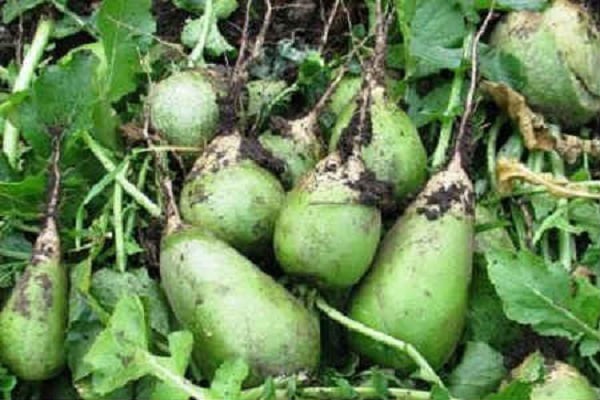
Seed preparation
Chinese radish is not very demanding on the soil; many grow it in gardens and summer cottages. If the planting time is correct, the crop can be harvested twice a summer.Success largely depends on the quality of the seeds, it is imperative to select healthy and large grains. To do this, they are placed in a composition prepared from a quarter glass of salt and a liter of water.
Immediately before planting, the seeds are soaked for a day in a solution of potassium permanganate or for 10 minutes in heated hydrogen peroxide. You can improve the germination of the culture by lowering the grains for 6 hours in an infusion of ash.
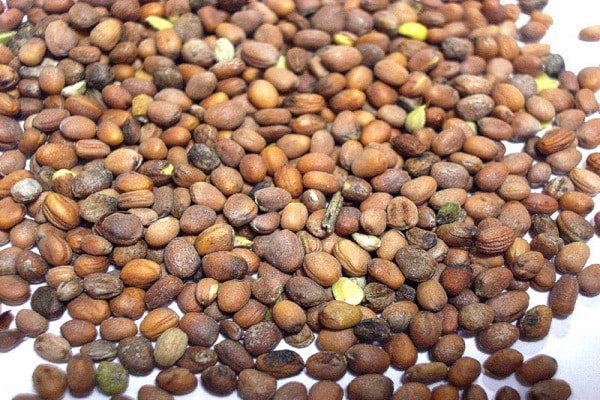
Selecting a site for growing Margelan radish
Experienced gardeners recommend planting root crops in the garden where tomatoes, onions, cucumbers, beans used to grow. The vegetable takes root well on different lands. But acidic soils require preliminary liming, heavy clay soil is diluted with sand and peat. The area where cabbage and other cruciferous crops were grown last season is not suitable for root crops.
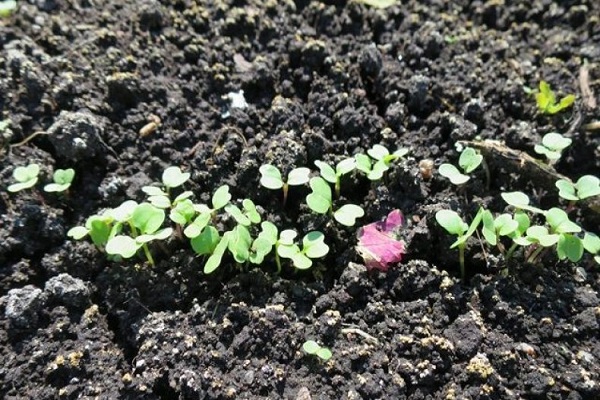
Landing
Chinese radish takes root in regions with a sharply continental climate, is unpretentious in care, gives a good harvest of tasty and healthy food.
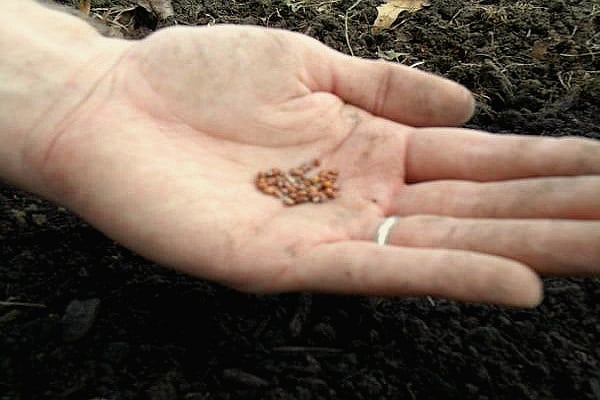
Landing dates
Plants begin sowing when the air warms up to 18 degrees. Chinese radish is sent to open ground in early May, planting is carried out for long-term storage in June.
If the growing season of the crop falls on a period when the daylight hours exceed 15 hours, the radish begins to bloom profusely instead of forming fruits. The sowing time should be chosen taking into account the climate of the region.
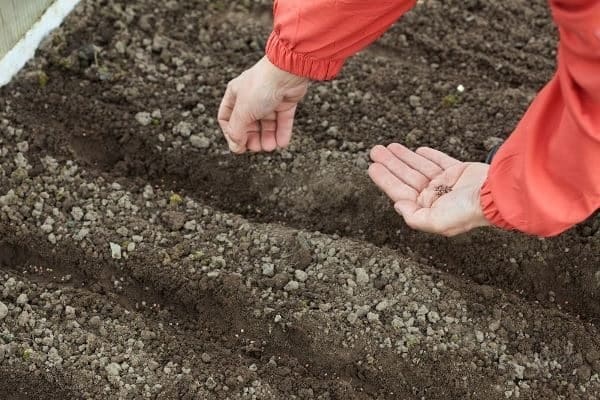
The soil
A garden bed, matched to a Chinese radish, is dug up on a shovel bayonet in the fall, organic matter and mineral fertilizers are applied. Before planting, fertilize with compost. Fresh manure should be discarded. Sandy soil needs to be fed more.
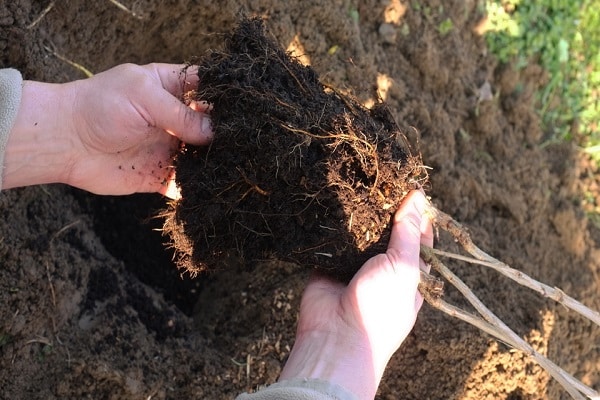
Landing procedure
Having chosen and prepared a bed for Margelan radish, holes are made in the ground every 15 centimeters. Up to 5 treated seeds are placed in these pits to a depth of 2 cm, soil is poured on top and watered. The seedlings are protected from frost with a film. The distance between the rows of radishes should be at least 50 cm.
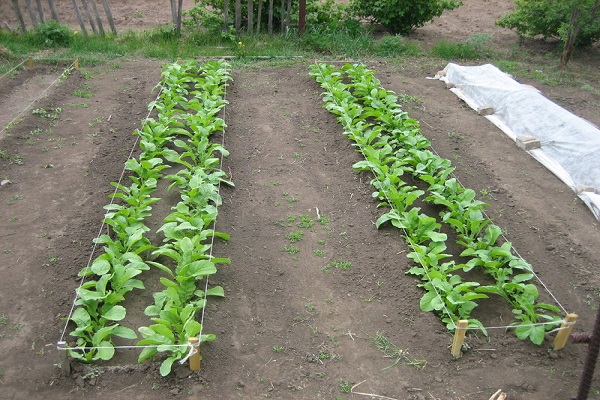
Care
To collect 6 kg of juicy root crops from a square meter of a plot, you need to show maximum care for the culture. Margelan radish is necessary:
- to water:
- thin out;
- feed.
In the absence of proper care, there will be no good harvest. The culture will lose resistance to diseases, large root crops will not form.
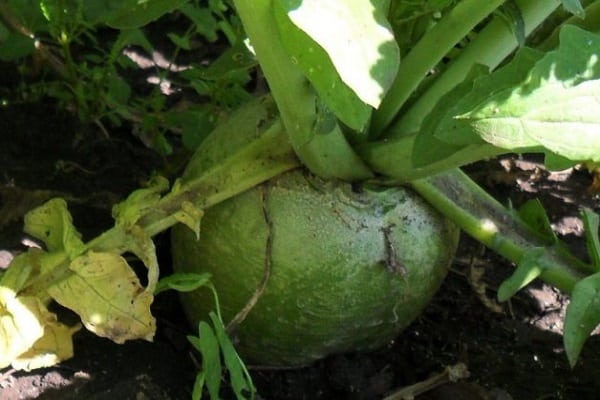
Thinning
After emergence, the film is removed. When 3 or 4 leaves are formed on the plant, it is necessary to remove the defective shoots, weed out the weeds. Thin the radish repeatedly until one bush remains in each hole. The tops of the fruits, towering above the ground, must be spud, otherwise they will become coarse. To ensure the flow of air to the roots, yellowed leaves and some of the green ones are cut off.
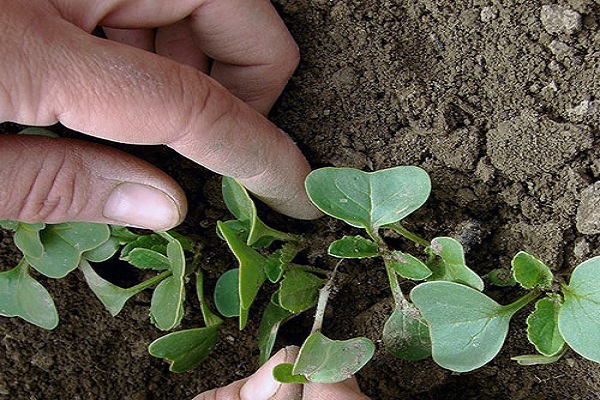
Watering
Margelan radish is drought-resistant, but loves water. The beds are moistened abundantly, especially when root crops begin to form. During the rains, watering is stopped; in the heat, it is necessary to moisten the soil at least 2 times a week.
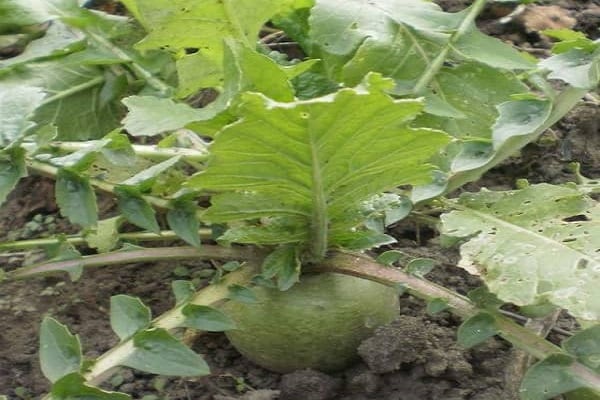
Top dressing
Before planting a crop, organic matter and mineral fertilizers are introduced into the soil. When shoots appear, the plant needs nutrients. Fermented grass or rotted mullein is used for feeding. During the growing season, the bed is fertilized a couple of times, always during the formation of fruits.
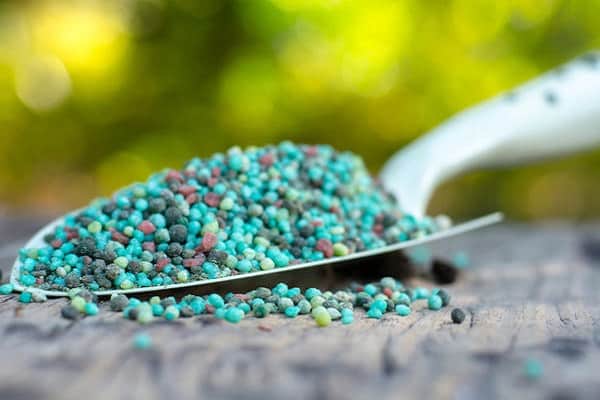
Prevention
Carrying out some measures helps to prevent the development of diseases in radish, to avoid the invasion of insects. After planting the seeds, tobacco and wood ash are poured onto the soil. The second time such processing is started when the sprouts emerge. Hilling the tops of the fruit regularly will protect them from slugs.
Margelan radish tolerates frosts normally; there is no need to cover the plant with foil in autumn.

Diseases and pests
The culture most often suffers from powdery mildew, is affected by a black leg, and dies from white rot. Careful removal of weeds and excess leaves, digging up the remnants of roots in the fall, adherence to the rules of crop rotation can prevent the development of these diseases. Chinese radish is adored by cruciferous fleas; the culture is affected by the cabbage fly. To protect the plant from these pests, the cultivation of the land with tobacco and ash helps.
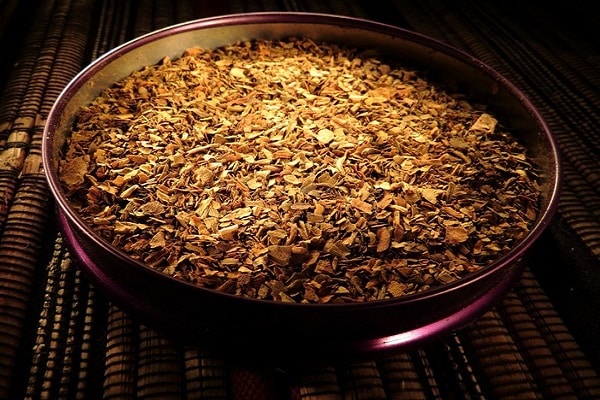
Harvesting and storage
Root crops react negatively to weather changes, temperature drop. You cannot leave them in the ground until late autumn.
Early varieties are dug up 2 months after the sprouts emerge, the late ones are harvested after 100-110 days. Harvesting is done in the morning or evening in dry weather. Root crops are pulled out by the leaves, after which they are cleared of the ground.
Without cracks and dents, margelan radish will not deteriorate, will not lose its taste until spring, if stored at zero temperature and high humidity. The vegetable is used in salads, suitable for pickling, stewed and pickled. Root crops supply vitamins and minerals to the human body, which are not enough in winter.
